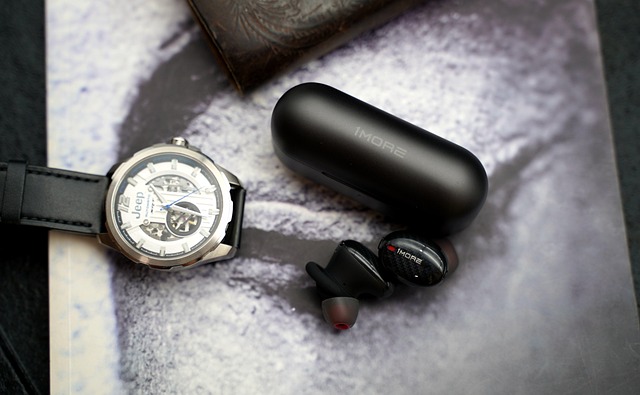CoolSculpting is a leading non-surgical fat reduction procedure that uses controlled cooling to freeze and eliminate stubborn fat cells, offering precise body contouring with minimal downtime. When compared to other non-surgical options like laser treatments, ultrasound procedures, or traditional liposuction, CoolSculpting stands out for its effectiveness in targeting specific areas like love handles and belly fat, FDA approval, and lower risk of side effects. However, it may not be as effective for extensive fat reduction and requires multiple sessions. A comprehensive Non-Surgical Fat Reduction Comparison is crucial for making informed decisions based on individual needs and desired outcomes, balancing the advantages of CoolSculpting—such as minimal downtime—with potential drawbacks like higher cost and need for multiple treatments.
“Discover the potential of non-surgical fat reduction with CoolSculpting—a revolutionary body contouring solution. This comprehensive guide explores what CoolSculpting is, how it works, and its numerous benefits for achieving a slimmer, more defined silhouette. We weigh the pros and cons, compare it to other non-invasive methods, and identify who makes an ideal candidate. Learn about the cost, post-treatment care, and long-term results to make an informed decision regarding this game-changing approach to fat reduction, offering a viable alternative to surgical procedures.”
Understanding Non-Surgical Fat Reduction: A Comprehensive Overview

CoolSculpting, a non-surgical fat reduction procedure, has gained popularity for its ability to target and eliminate stubborn fat areas without invasive surgery. This method uses controlled cooling to freeze and crystallize fat cells, leading to their gradual elimination from the body. Understanding CoolSculpting’s mechanism provides valuable insight into the broader category of non-surgical fat reduction treatments, allowing for an informed comparison with other available options.
When considering a non-surgical Fat Reduction Comparison, it’s crucial to explore various techniques and their effectiveness. Unlike traditional lipo, which involves surgical incisions, non-surgical methods like CoolSculpting offer a less invasive approach. Other alternatives include laser-based treatments, ultrasound procedures, and more, each with its own set of advantages and potential drawbacks. By examining these different approaches, individuals can make a well-rounded decision based on their specific needs, preferences, and desired outcomes.
What is CoolSculpting? Process and Mechanism Explained

CoolSculpting is a non-surgical fat reduction treatment that uses cryolipolysis to freeze and destroy unwanted fat cells. The process involves applying a cooling device to specific areas of the body, where targeted fat is located. This technology lowers the temperature of the fat cells, causing them to crystallize and eventually die. As these dead cells are processed by the lymphatic system, they’re eliminated from the body naturally over time.
Compared to surgical options, CoolSculpting offers a non-invasive approach with minimal downtime. It’s particularly effective for treating small areas like love handles, belly bulges, and muffin tops. However, it may not be suitable for significant weight loss or large areas of fat reduction. The mechanism ensures precise fat removal without damaging surrounding tissues, making it a popular choice among those seeking localized fat reduction without surgery.
CoolSculpting Pros: Unlocking the Benefits for Body Contouring

CoolSculpting offers a non-surgical fat reduction solution that has gained popularity for its effectiveness and convenience. One of its key advantages is its ability to target specific areas, providing precise body contouring. Unlike some other treatments, CoolSculpting freezes and eliminates fat cells permanently, making it an appealing option for those seeking long-lasting results. This procedure is ideal for individuals with pinchable fat in certain areas, such as the abdomen, love handles, or outer thighs, offering a non-invasive alternative to surgical options.
In terms of comparison to other fat reduction methods, CoolSculpting stands out due to its gentle approach and minimal downtime. It avoids the use of needles or invasive instruments, reducing the risk of associated complications. This makes it an attractive choice for folks who prefer a simpler, less traumatic procedure.
Potential Drawbacks and Side Effects of CoolSculpting Treatment

While CoolSculpting is a non-surgical fat reduction treatment that has gained popularity, it’s important to be aware of its potential drawbacks and side effects. Unlike surgical procedures, which offer more immediate and dramatic results, CoolSculpting works by freezing and eliminating fat cells over time. One of the main considerations is that it may not be as effective for everyone, particularly in areas with less fat or stronger muscle definition. In such cases, the treatment might not deliver visible results, making it a less ideal choice compared to other more targeted procedures.
Additionally, while generally considered safe, CoolSculpting can cause temporary side effects like numbness, tingling, and mild swelling at the treatment site. Some individuals may also experience discomfort during the procedure itself. Unlike surgical options that often involve downtime and recovery periods, CoolSculpting allows for relatively quick recovery, with most people resuming their normal activities shortly after the session. However, multiple treatments are typically required to achieve optimal results, which can be a factor in cost and commitment when compared to other fat reduction methods.
Comparing CoolSculpting to Other Non-Invasive Fat Reduction Methods

CoolSculpting stands out among non-surgical fat reduction methods for its unique approach to freezing and eliminating fat cells. However, when compared to alternatives like Laser-assisted lipo or Ultrasonic fat reduction, each option has distinct advantages and drawbacks. For instance, while CoolSculpting offers a non-invasive procedure with minimal downtime, it may not be as effective in treating larger areas or deep fat pockets as compared to surgical options.
Laser-assisted lipo and Ultrasonic fat reduction, on the other hand, can target specific fat cells more precisely, leading to quicker results for certain body types. Yet, these procedures often involve needles or laser light penetration into the skin, carrying a higher risk of side effects like swelling, bruising, and potential skin damage. In terms of non-surgical Fat Reduction Comparison, CoolSculpting presents itself as a safe, FDA-approved option, catering to those seeking a less invasive yet still effective solution for localised fat reduction.
Candidate Considerations: Who is Suitable for CoolSculpting?

CoolSculpting is a non-surgical fat reduction procedure that has gained popularity for its ability to target and eliminate stubborn fat areas. When considering this treatment, it’s essential to understand who it’s best suited for. Ideal candidates are typically individuals with well-defined fat bulges in specific areas of the body, such as the abdomen, love handles, or flanks. It is not recommended for people with significant weight problems or those looking for a dramatic body transformation.
The suitability also depends on individual skin type and overall health. Patients should have healthy skin without any significant conditions like eczema or psoriasis in the treatment area. Additionally, individuals who are pregnant or breastfeeding should avoid CoolSculpting until medical advice is sought, as its effects on these specific populations are not yet fully established. A consultation with a qualified healthcare provider is crucial to determine if CoolSculpting aligns with your goals and health profile.
Cost Analysis: Decoding the Expense of CoolSculpting Procedures

CoolSculpting, as a non-surgical fat reduction procedure, comes with its financial considerations. The cost analysis of CoolSculpting can vary significantly based on several factors, including the treatment area, the number of sessions required, and the location of the clinic. It’s important to note that while it may be more expensive than some other non-surgical options, it offers a precise and controlled approach to fat reduction without incisions or recovery time.
When comparing CoolSculpting to other non-surgical fat reduction methods, such as laser treatments or radiofrequency devices, the pricing can differ drastically. CoolSculpting’s appeal lies in its ability to target specific areas, like love handles, belly fat, and chin fat, with minimal discomfort and no downtime. This precision often translates to a more targeted and effective treatment, justifying the higher cost for many patients seeking long-lasting results without surgery.
Post-Treatment Care and Long-Term Results: What to Expect

After a CoolSculpting treatment, proper post-care is essential for optimal results and to minimize any potential side effects. Patients can expect some temporary redness and swelling in the treated areas, which usually subside within a few days. Staying hydrated by drinking plenty of water and applying a cooling gel or ice packs can help alleviate any discomfort. It’s crucial to avoid strenuous activities or extreme temperatures immediately after the procedure.
In terms of long-term results, CoolSculpting is known for its durable effects, offering significant fat reduction that can last for several months, sometimes even longer. When compared to other non-surgical fat reduction methods, CoolSculpting stands out for its ability to target and eliminate specific fat cells without impacting surrounding tissue. However, individual outcomes may vary based on factors like body type, lifestyle, and adherence to post-treatment instructions.
